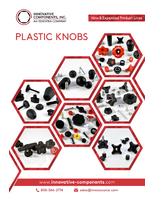IBM Doubles Down on Cell Blade
New System Doubles Density, Memory, Throughput; Enhances Power Efficiency and Ability to Work Seamlessly With Existing IT Systems
ARMONK, NY - 29 Aug 2007: IBM (NYSE: IBM) today introduced a new version of the breakthrough computing system based on the Cell Broadband Engine (Cell/B.E.) -- the IBM BladeCenter® QS21 -- that delivers twice the memory, density and I/O throughput as well as enhances power efficiency and the ability to work with existing IT infrastructure for both current and new customers. Also announced today is the IBM Software Development Kit (SDK) for Multicore Acceleration Version 3.0 -- the cornerstone of the Cell/B.E. software ecosystem and developer enablement program.
The IBM BladeCenter® QS21 is the width of one blade computing system, allowing a customer to fit a maximum of 14 IBM BladeCenter® QS21's per BladeCenter chassis as opposed to only seven with the previous version -- effectively doubling the compute density. As well the QS21 offers an additional two gigabytes of I/O buffer memory, a feature that was not available on the previous version of the product. The I/O throughput of the IBM BladeCenter® QS21 -- a measurement of the ability for data to travel in and out of the system -- supports 16 lanes of single data rate Infiniband.
As part of an announcment of new Cell/B.E.-based technologies -- including a new version of the Cell/B.E.-based Blade System -- IBM today made available a technology demonstration program called the 'Interactive Ray Tracer' (iRT). This application renders -- in real-time -- photorealistic images from a complex 3D scene... demonstrating the capabilities of the Cell/B.E. processor.
These new products -- available in October -- will bring the multicore acceleration technology made possible by the Cell/B.E. processor to clients and developers in a wide range of industries, including those that create and run highly visual, graphic and immersive, real-time applications such as 3D rendering, compression, and encryption. Multicore acceleration is the ability to harness the power of multiple computing cores to manage these specific types of applications with a high degree of power and cost efficiency.
"With the QS21 customers benefit from an evolution of Cell/B.E.-based blade server technology that incorporates not only twice the memory and density, but can now function either as a standalone blade server, or as a seamless addition to existing POWER or x86-based system," said Jim Comfort, vice president for Optimized Systems, IBM Global Engineering Solutions. "Coupled with the new Cell/B.E. Software Development Kit, which streamlines application development, we've introduced a package that will allow more businesses to benefit from the proven power of the Cell/B.E. processor."
IBM also made available today a scalable technology demonstration program called the "Interactive Ray Tracer" (iRT) through its alphaWorks® website. This application renders -- in real-time -- photorealistic images from a complex 3D scene, a task traditionally achieved by hours of processing in high performance computing environments. This demonstrates both the capabilities of the SDK and Cell/B.E. processor in creating scalable solutions to computationally intensive applications.
"It's very encouraging to see Cell/B.E. technology evolving," said Rolf Herken, CEO and CTO of mental images®. "With expanding memory and faster communication, Cell B.E.-based systems are becoming increasingly attractive platforms for our mental ray® rendering technology and for visually rich 3D application services based on our RealityServer® platform."
The IBM BladeCenter QS21 performs more computations, faster, with higher fidelity, to solve problems not previously practical or feasible in traditional computing architectures. Unlike standard servers based on traditional multi core architectures -- which handle streaming and numerically intensive workloads less efficiently and may not achieve the same level of real-time data streaming -- IBM BladeCenter QS21 provides order-of-magnitude performance gains.
"The last two years have been an exciting time at Mercury, as we have worked with IBM to advance the adoption of Cell Technology," said Joel Radford, vice president of Corporate Marketing and Strategic Alliances at Mercury Computer Systems, Inc. "We look forward to continued collaborations as we put the IBM BladeCenter QS21 and related Mercury products to work for our customers." IBM and Mercury Computer Systems, Inc. have been working together to commercialize the Cell/B.E. processor since June 2005.
The IBM BladeCenter QS21 is one of the most power efficient computing platforms to date, generating a measured 1.05 Giga Floating Point Operations Per Second (GigaFLOPS) per watt. With its peak performance of approximately 460 GFLOPS, clients can achieve 6.4 Tera Floating Point Operations Per Second (TeraFLOPS) in a single BladeCenter chassis and over 25.8 TeraFLOPS in a standard 42U rack.
Software Development Kit Detail
The IBM SDK for Multicore Acceleration Version 3.0 is the first production level development tool kit containing everything needed to develop and easily deploy applications that take advantage of the speed of the Cell/B.E. processor. For programmer productivity it includes industry standard libraries that provide system services, and programming model support. Additionally, a step-by-step tutorial is available along with example code, demonstration programs, compliance tests and extensive documentation to enhance customer productivity in Cell/B.E. development. The SDK also includes debugging tools, performance analysis and tuning tools.
The IBM Software Development Kit for Multicore Acceleration also introduces many early release features. Among these are libraries supporting a Hybrid computing methodology. The Accelerated Library Framework for Hybrid-x86 and the Data Communication and Synchronization Library for Hybrid-x86 programming models allow automatic partitioning of a customer application across a hybrid computing platform consisting of an x86-based system and one or more Cell/B.E. processor-based BladeCenter QS21s. This provides an effective means to leverage the power of the Cell/B.E. processor in existing applications.
The IBM SDK for Multicore Acceleration Version 3.0 will be generally available October 19, 2007.
The IBM BladeCenter QS21 will be generally available October 26, 2007.
For more information about IBM BladeCenter QS21: http://03.ibm.com/systems/bladecenter/qs21
For More information about IBM SDK for Multicore Acceleration Version 3.0: http://03.ibm.com/technology/cell/software.html
To view the Interactive Ray Tracing Demo: www.alphaworks.ibm.com/tech/irt
alphaWorks serves as a window for early adopters, SMBs, developers and students to access emerging technologies and resources created in IBM research and development labs worldwide. For more information, please visit: www.alphaworks.ibm.com
Contact(s) information
Bruce McConnel
IBM Media Relations
914-766-4427
wmcconn@us.ibm.com




